
The Mitsubishi A6M Zero was a long range Naval fighter aircraft that formed the backbone of the Imperial Japanese Navy's Air Arm throughout the Second World War. Blessed with exceptional manoeuvrability, as well as long range, the Zero proved to be the best carrier fighter aircraft in the World when it made its debut in China in 1940, and then again in the opening stages of the Pacific War against the United States. In the months following Pearl Harbour the allies struggled to cope with the Zero.The British fared no better than the Americans did. The RAF squadrons stationed in Malaya were flying the American Brewster Buffalo; a short barrel shaped fighter that was outmoded before it reached the front. Aware of its lack of performance the British had banished the fighter to Burma, away from combat with the superior German Bf-109. The general impression was that the Japanese had nothing but outdated biplanes that would not be a match for the Brewster fighter. When the British Buffaloes came in contact with the A6M they were sliced to ribbons.
To reduce their losses the RAF decided to replace the outmatched Buffalo with the more formidable Hawker Hurricane, famed for its decisive role in the Battle of Britain. Unfortunately, its pilots also found that fighting a Zeke on its terms was practically hara-kiri. Finally, the British threw their best at the Japanese, the fabled Supermarine Spitfire. To the Allies dismay, this fighter also could not compare with the incredibly nimble Zero. In only two engagements, Zeros downed 17 of 27 while losing 2 of their own.Tactics had alot to do with the dismal performance of the Spit against the zero. The Brits were still flying tight finger 3 formations (most figured out not to do that after the battle of britian) and attempted to dogfight the zero in the horizontal. Until the zero was taken on in pairs And the fight was done in the "vertical," the zero couldn't be beat.
Over the Northern Territory of Australia, RAAF Spitfires helped defend the port city of Darwin against air attack by the Japanese Naval Air Force.
It seemed the A6M was an unstoppable juggernaut. It soon gained the reputation of being invincible. Everywhere it was encountered, the Zero vanquished its enemies.The Fw-190 would B&Z a Zero to death, and so would faster Spit's such as the IX. However going into a Dogfight with the Zero was stupid, especially below 300 mph where it could be called suicide. The Zero was a superior dogfighter, probably the best dogfither. I also want to point out that Zero was a very capable plane which was designed as long range and carrier based plane. It unsurpassed range gave it upperhand in the conflict of Spitfire in Pacific.
There is no doubt that in the early combats between the Spit and the Zero the Spit was hammered, but its wrong to assume that this was the natural situation.
They went against the Zero and tried dogfighting and we know the result was. It was a natural mistake seeing how the Spits excelled at dogfighting everywhere else.
However once the lesson was learnt the Spits were able to gain the upper hand.In a turning angles fight below 275 mph the Zero had no peers. The Spitfire pilots could not use the the same tactics used against the BF109. However a Zero with an expert pilot flying it could be tough to handle unless you surprised him

Of the three assuming that we are talking about the Spit V then its
1) FW190
2) Spit V
3) Zero




 was a Roman Catholic, and some Protestants under his rule opposed his kingship. James Scott, 1st Duke of Monmouth, an illegitimate
was a Roman Catholic, and some Protestants under his rule opposed his kingship. James Scott, 1st Duke of Monmouth, an illegitimate son of Charles II, claimed to be rightful heir to the throne and attempted to displace James II.
son of Charles II, claimed to be rightful heir to the throne and attempted to displace James II.
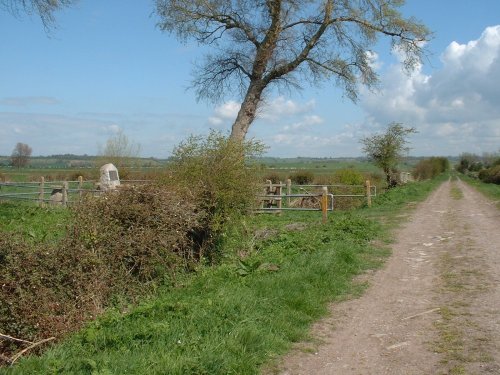 was executed for treason on 15 July, and many of his supporters were executed or transported in the "Bloody Assizes" of Judge Jeffreys.
was executed for treason on 15 July, and many of his supporters were executed or transported in the "Bloody Assizes" of Judge Jeffreys.
 near Wrexham, in Denbighshire,
near Wrexham, in Denbighshire, 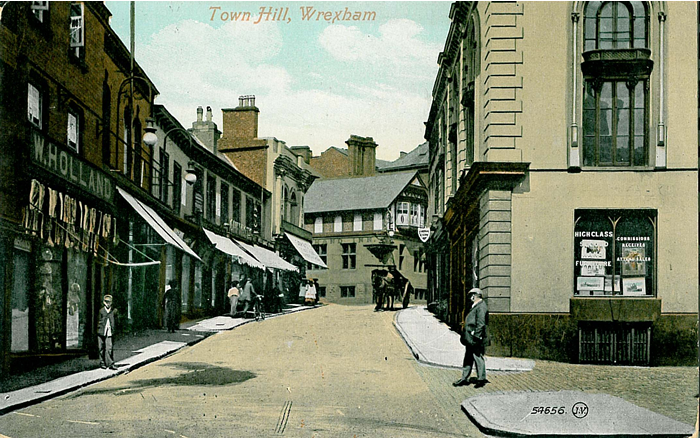 Wales, the sixth son of John and Margaret Jeffreys. His grandfather, John Jeffreys (died 1622) had been Chief Justice of the Anglesey circuit of the Great Sessions. His father, also John Jeffreys (1608–1691) was a Royalist during the English Civil War, but was reconciled to the Commonwealth and served as High Sheriff of Denbighshire in 1655.
Wales, the sixth son of John and Margaret Jeffreys. His grandfather, John Jeffreys (died 1622) had been Chief Justice of the Anglesey circuit of the Great Sessions. His father, also John Jeffreys (1608–1691) was a Royalist during the English Civil War, but was reconciled to the Commonwealth and served as High Sheriff of Denbighshire in 1655.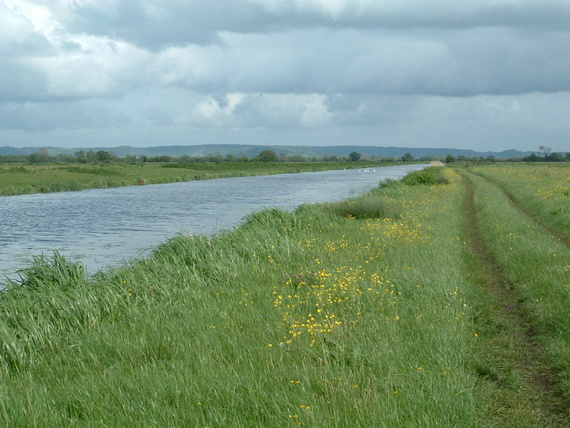
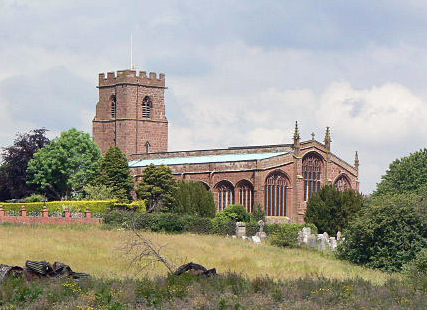 from 1668–1675. His younger brother, James, made a good ecclesiastical career, becoming Vice-Dean of Canterbury in 1685.
from 1668–1675. His younger brother, James, made a good ecclesiastical career, becoming Vice-Dean of Canterbury in 1685.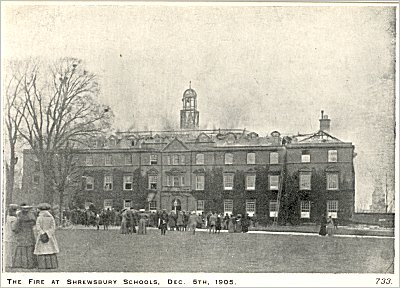
 periodically tested by Philip Henry,
periodically tested by Philip Henry,  a friend of his mother. He attended St Paul's School (the school today)
a friend of his mother. He attended St Paul's School (the school today)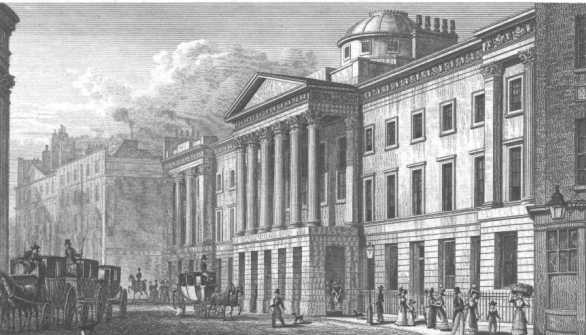 , London from 1659–1661 and Westminster School, London from 1661–1662.
, London from 1659–1661 and Westminster School, London from 1661–1662. He became an undergraduate at Trinity College Cambridge University in 1662,
He became an undergraduate at Trinity College Cambridge University in 1662, leaving after one year without graduating, and entering the Inner Temple for law in 1663.In 1667, he married Sarah Neesham or Needham, by whom he had seven children before her death in 1678. She was the daughter of the impoverished vicar of Stoke d'Abernon.
leaving after one year without graduating, and entering the Inner Temple for law in 1663.In 1667, he married Sarah Neesham or Needham, by whom he had seven children before her death in 1678. She was the daughter of the impoverished vicar of Stoke d'Abernon.  There is a family legend that Jeffreys sought to marry a daughter of a rich City merchant and had a secret correspondence with her, through Sarah, her companion. When the merchant discovered the plot he refused his home to Sarah and George did a noble act marrying the poor orphan.They married in the church of All Hallows-by-the-Tower in the City of London.
There is a family legend that Jeffreys sought to marry a daughter of a rich City merchant and had a secret correspondence with her, through Sarah, her companion. When the merchant discovered the plot he refused his home to Sarah and George did a noble act marrying the poor orphan.They married in the church of All Hallows-by-the-Tower in the City of London.
 Being only 29 at the time of her second marriage, she was described as a 'brisk young widow' and there were some rumours about her. She was the daughter of Sir Thomas Bludworth, who was the Lord Mayor of the City of London during the Great Plague of 1665 and the Great Fire of 1666 .This Lord Mayor of London( from October 1665 to October 1666. )great inaction during the early stages of the Great Fire of London was widely criticized as one of the causes for the great extent of the damage to the city.
Being only 29 at the time of her second marriage, she was described as a 'brisk young widow' and there were some rumours about her. She was the daughter of Sir Thomas Bludworth, who was the Lord Mayor of the City of London during the Great Plague of 1665 and the Great Fire of 1666 .This Lord Mayor of London( from October 1665 to October 1666. )great inaction during the early stages of the Great Fire of London was widely criticized as one of the causes for the great extent of the damage to the city.
 and Justice of the Peace for Flintshire. Charles II created him a baronet in 1681, and two years later, he was Chief Justice of the King's Bench and a member of the Privy Council.
and Justice of the Peace for Flintshire. Charles II created him a baronet in 1681, and two years later, he was Chief Justice of the King's Bench and a member of the Privy Council.
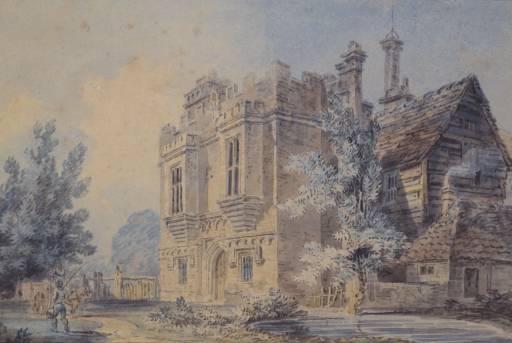 The Rye House Plot of 1683 was a plan to assassinate King Charles II of England and his brother (and heir to the throne) James, Duke of York. Historians vary in their assessment of the degree to which details of the conspiracy were finalized. Whatever the state of the assassination plot, plans to mount a rebellion against the Stuart monarchy were being entertained by opposition leaders in Great Britain, and the government cracked down hard on those in a series of state trials, accompanied with repressive measures and widespread searches for arms. The Plot presaged the rebellions of 1685. Sidney was convicted and executed. James II, following his accession to the throne, named Jeffreys as Lord Chancellor in 1685, and elevated him to the peerage as Baron Jeffreys of Wem.
The Rye House Plot of 1683 was a plan to assassinate King Charles II of England and his brother (and heir to the throne) James, Duke of York. Historians vary in their assessment of the degree to which details of the conspiracy were finalized. Whatever the state of the assassination plot, plans to mount a rebellion against the Stuart monarchy were being entertained by opposition leaders in Great Britain, and the government cracked down hard on those in a series of state trials, accompanied with repressive measures and widespread searches for arms. The Plot presaged the rebellions of 1685. Sidney was convicted and executed. James II, following his accession to the throne, named Jeffreys as Lord Chancellor in 1685, and elevated him to the peerage as Baron Jeffreys of Wem.


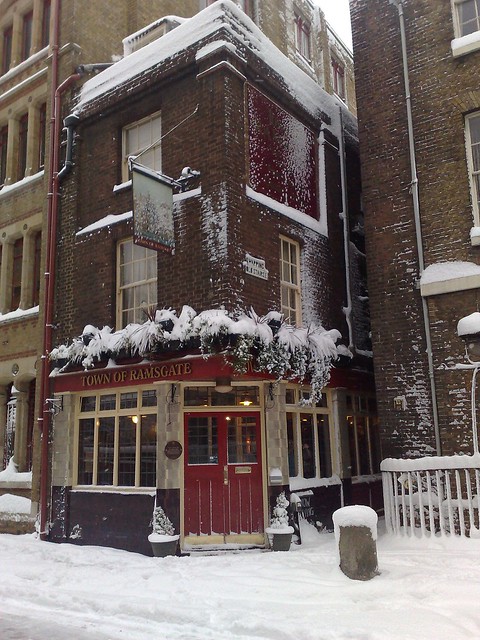 Reputedly he was disguised as a sailor, and was recognized by a surviving judicial victim. Jeffreys was in terror of the public when dragged to the Lord Mayor and then to prison "for his own safety". He begged his captors for protection from the mob.
Reputedly he was disguised as a sailor, and was recognized by a surviving judicial victim. Jeffreys was in terror of the public when dragged to the Lord Mayor and then to prison "for his own safety". He begged his captors for protection from the mob.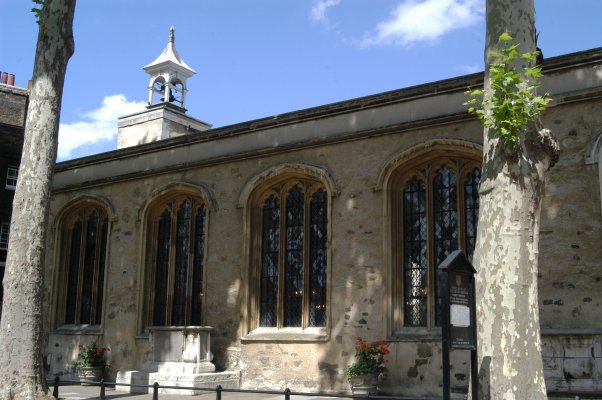 In 1692 his body was moved to St Mary Aldermanbury.
In 1692 his body was moved to St Mary Aldermanbury.

 and later Henrietta de Kérouaille, sister of the Duchess of Portsmouth,
and later Henrietta de Kérouaille, sister of the Duchess of Portsmouth,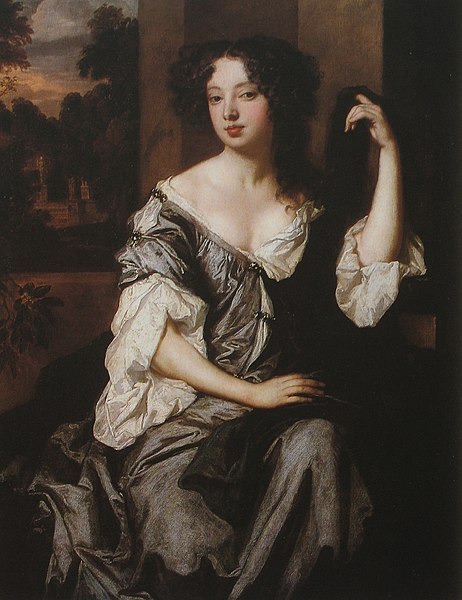 a mistress of Charles II and a supporter of Jeffreys in the early stages of his career. John and Charlotte Jeffreys had one daughter, named Henriette-Louise after the two Kerouaille sisters, but no son, so that the male line of George Jeffreys became extinct. There are descendants from the daughters.
a mistress of Charles II and a supporter of Jeffreys in the early stages of his career. John and Charlotte Jeffreys had one daughter, named Henriette-Louise after the two Kerouaille sisters, but no son, so that the male line of George Jeffreys became extinct. There are descendants from the daughters. Jeffreys' reputation today is mixed. His legal ability was undoubtedly high, and he was definitely good in all cases that required him to rule on questions of law, but not of loyalty. Some say he was a personally vengeful man. He had bitter personal and professional rivalries with Sir William Williams, whom he tried to ruin with a fine for publishing a libel. His political animus was displayed during his legal career. He suffered a painful kidney disease that may well have affected his unbridled temper and added to this reputation.
Jeffreys' reputation today is mixed. His legal ability was undoubtedly high, and he was definitely good in all cases that required him to rule on questions of law, but not of loyalty. Some say he was a personally vengeful man. He had bitter personal and professional rivalries with Sir William Williams, whom he tried to ruin with a fine for publishing a libel. His political animus was displayed during his legal career. He suffered a painful kidney disease that may well have affected his unbridled temper and added to this reputation. of the Antelope Hotel. Jeffreys lodged nearby at 6 High West Street, and is said to have used a secret passage from his lodgings to the Oak Room.
of the Antelope Hotel. Jeffreys lodged nearby at 6 High West Street, and is said to have used a secret passage from his lodgings to the Oak Room.

 They still can be seen there. Both portraits are reproduced in Keeton's Lord Chancellor Jeffreys and the Stuart Cause.
They still can be seen there. Both portraits are reproduced in Keeton's Lord Chancellor Jeffreys and the Stuart Cause.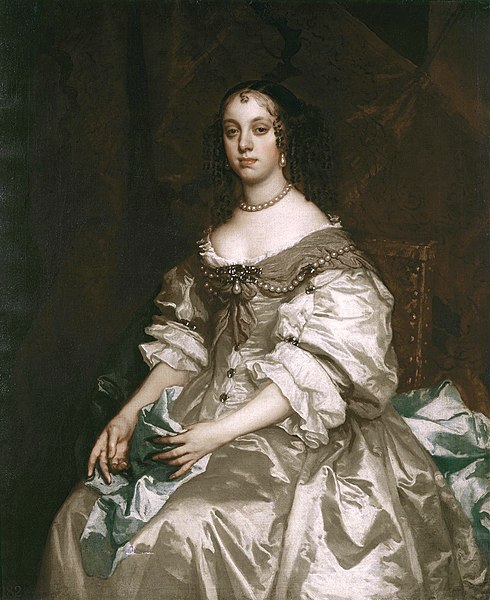

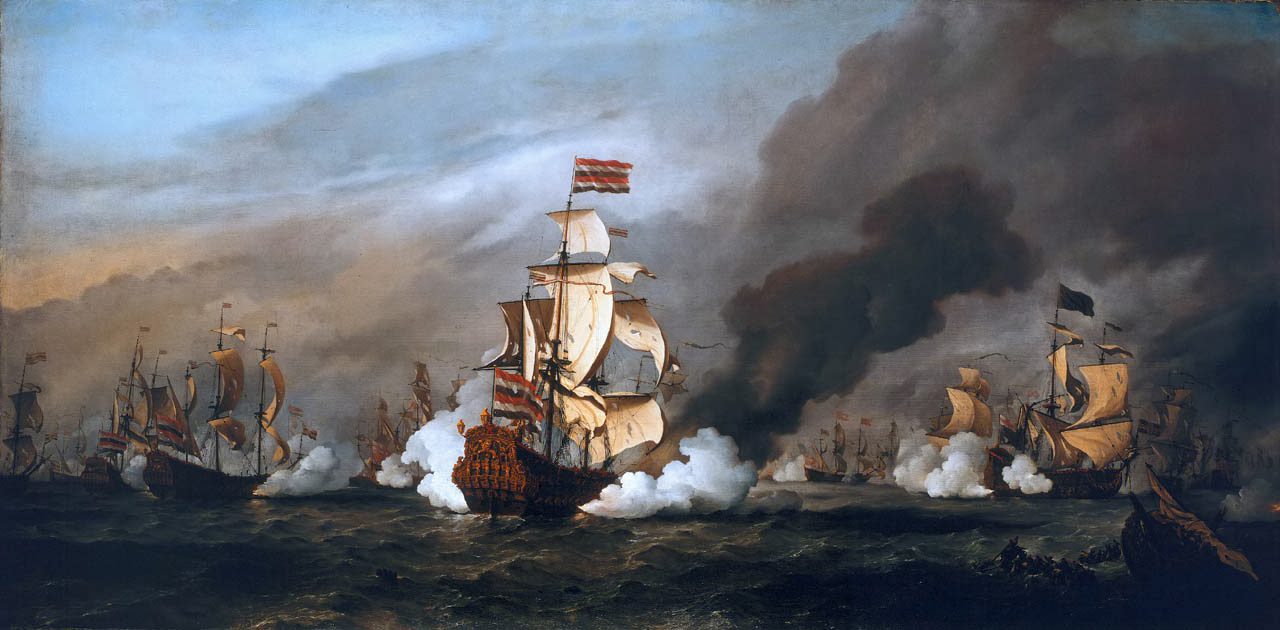

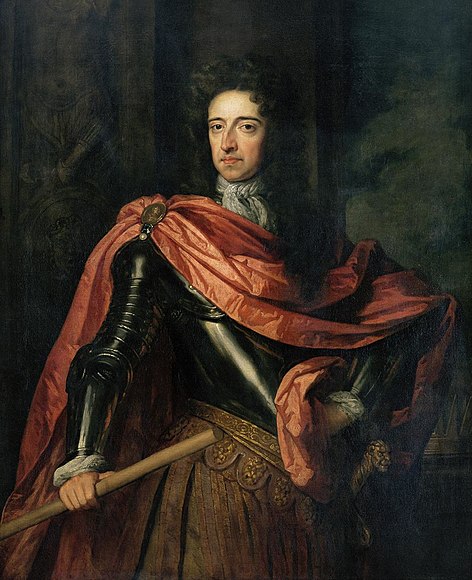 although also a Protestant, was bound to James by treaties and could not accommodate a rival claimant.In May 1685, Monmouth set sail for South West England, a strongly Protestant region, with three small ships, four light field guns and 1500 muskets
although also a Protestant, was bound to James by treaties and could not accommodate a rival claimant.In May 1685, Monmouth set sail for South West England, a strongly Protestant region, with three small ships, four light field guns and 1500 muskets and gathered about 300 men at Lyme Regis in Dorset on
and gathered about 300 men at Lyme Regis in Dorset on  11 June. King James was soon warned of Monmouth's arrival; two customs officers from Lyme arrived in London on 13 June having ridden 200 miles (322 km) post haste.
11 June. King James was soon warned of Monmouth's arrival; two customs officers from Lyme arrived in London on 13 June having ridden 200 miles (322 km) post haste.



 Many of the militiamen deserted and joined Monmouth's army, before he fought another skirmish on the 15th at Axminster. The recruits joined his disorganised force, which was now around 6,000, mostly nonconformist,artisans and farmer workers armed with farm tools (such as pitchforks):one famous supporter was the young Daniel Defoe. front rank above
Many of the militiamen deserted and joined Monmouth's army, before he fought another skirmish on the 15th at Axminster. The recruits joined his disorganised force, which was now around 6,000, mostly nonconformist,artisans and farmer workers armed with farm tools (such as pitchforks):one famous supporter was the young Daniel Defoe. front rank above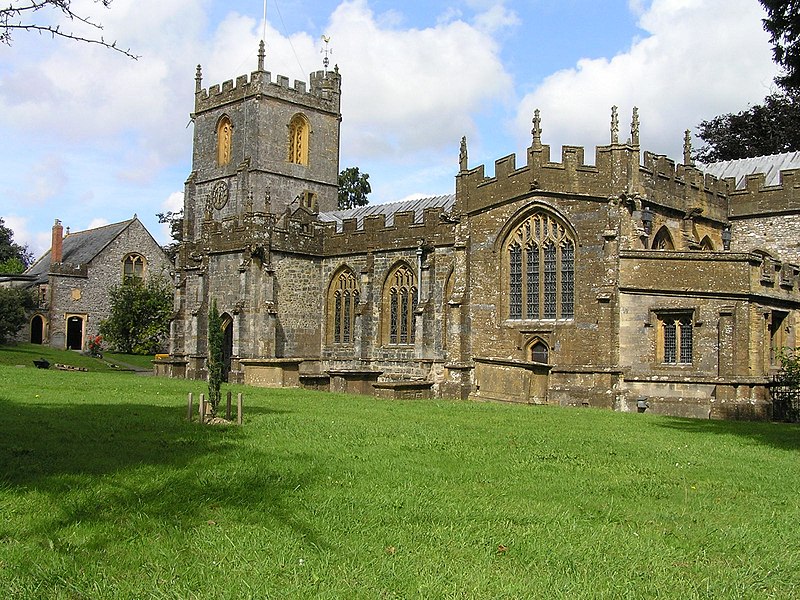 and was the subject of more coronations in Taunton on 20 June 1685, when Taunton Corporation was made to witness the event at swords point outside the White Hart Inn.
and was the subject of more coronations in Taunton on 20 June 1685, when Taunton Corporation was made to witness the event at swords point outside the White Hart Inn. This was done to encourage the support of the country gentry.He then continued north, via Shepton Mallet
This was done to encourage the support of the country gentry.He then continued north, via Shepton Mallet  June). Meanwhile, theRoyal Navy captured Monmouth's ships, cutting off any hope of an escape back to the continent should he be defeated.
June). Meanwhile, theRoyal Navy captured Monmouth's ships, cutting off any hope of an escape back to the continent should he be defeated. on 20 May and spent some days raising a small army of supporters, but was unable to hold them together while marching through the lowlands towards Glasgow. Argyll and his few remaining companions were captured at Inchinnan on 19 June,
on 20 May and spent some days raising a small army of supporters, but was unable to hold them together while marching through the lowlands towards Glasgow. Argyll and his few remaining companions were captured at Inchinnan on 19 June,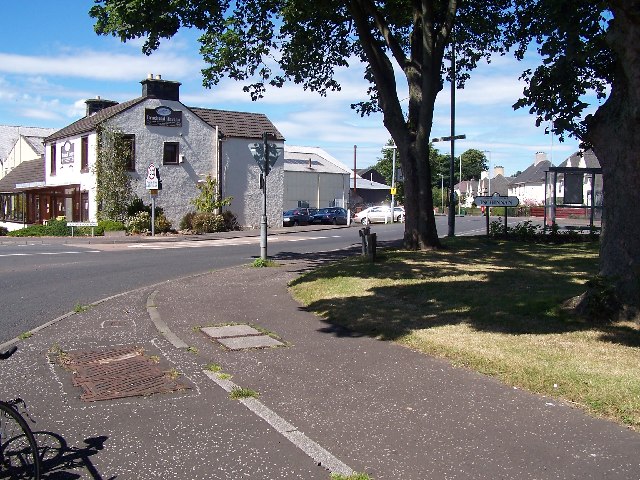 and he was taken to Edinburgh, where he was executed on 30 June. Expected rebellions in Cheshire and East Anglia also failed to materialise.On 24 June, Monmouth's army encamped at Pensford,
and he was taken to Edinburgh, where he was executed on 30 June. Expected rebellions in Cheshire and East Anglia also failed to materialise.On 24 June, Monmouth's army encamped at Pensford,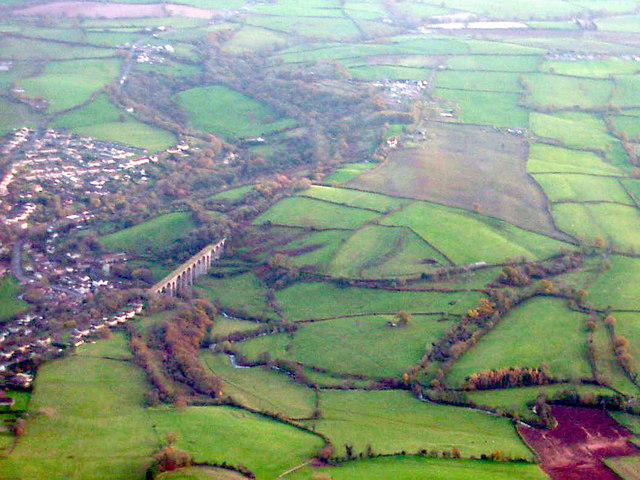 and the next day arrived in Keynsham,
and the next day arrived in Keynsham, intending to attack the city of Bristol (at the time was the second largest and second most important city after London). However, he found the city had been occupied by Henry Somerset, 1st Duke of Beaufort,
intending to attack the city of Bristol (at the time was the second largest and second most important city after London). However, he found the city had been occupied by Henry Somerset, 1st Duke of Beaufort, and the men of the Gloucester Militia. There were inconclusive skirmishes with a force of Life Guards commanded by Louis de Duras, 2nd Earl of Feversham
and the men of the Gloucester Militia. There were inconclusive skirmishes with a force of Life Guards commanded by Louis de Duras, 2nd Earl of Feversham  where his forces were attacked on the 27th June by Feversham's forces. Monmouth then marched overnight to Frome, heading forWarminster.
where his forces were attacked on the 27th June by Feversham's forces. Monmouth then marched overnight to Frome, heading forWarminster.

 but royalist forces cut off the route and Monmouth turned back towards Somerset through Shepton Mallet,
but royalist forces cut off the route and Monmouth turned back towards Somerset through Shepton Mallet, arriving in Wells on 1 July.
arriving in Wells on 1 July. 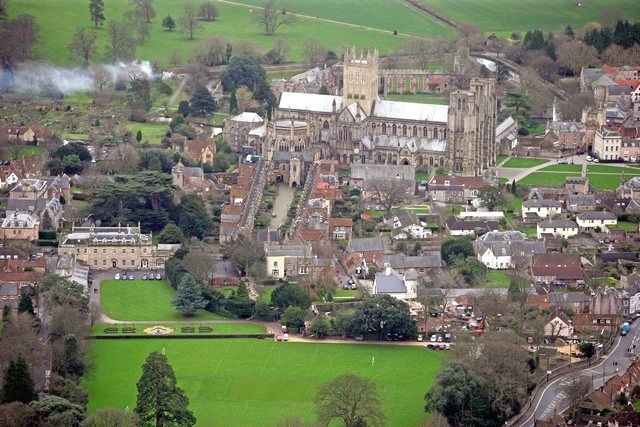 The soldiers damaged the West front of Wells Cathedral, tearing lead from the roof to make bullets, breaking the windows, smashing the organ and the furnishings, and for a time stabling their horses in the nave.
The soldiers damaged the West front of Wells Cathedral, tearing lead from the roof to make bullets, breaking the windows, smashing the organ and the furnishings, and for a time stabling their horses in the nave.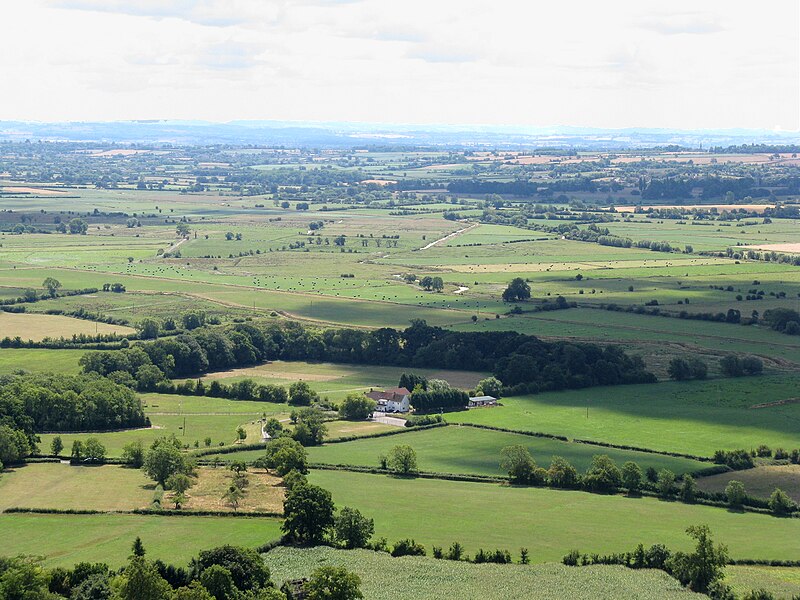 where Alfred the Great had found refuge in his conflicts with the Vikings. Becoming hemmed in at Bridgwater on 3 July, he ordered his troops to fortify the town.
where Alfred the Great had found refuge in his conflicts with the Vikings. Becoming hemmed in at Bridgwater on 3 July, he ordered his troops to fortify the town.
 his second in command) on 6 July at the Battle of Sedgemoor. Monmouth had risked a night attack, but surprise was lost when a musket was discharged. His untrained supporters were quickly defeated by the professionals, and hundreds were cut down by cannon- and musket-fire.
his second in command) on 6 July at the Battle of Sedgemoor. Monmouth had risked a night attack, but surprise was lost when a musket was discharged. His untrained supporters were quickly defeated by the professionals, and hundreds were cut down by cannon- and musket-fire.
 definition of battle, for which there are different interpretations. Other contenders for the title of last English battle include:
definition of battle, for which there are different interpretations. Other contenders for the title of last English battle include: the Battle of Preston in Lancashire, which was fought on 14 November 1715, during the First Jacobite Rebellion; and the Second Jacobite Rebellion's minor engagement at Clifton Moor
the Battle of Preston in Lancashire, which was fought on 14 November 1715, during the First Jacobite Rebellion; and the Second Jacobite Rebellion's minor engagement at Clifton Moor , near Penrith in Cumbria, on 18 December 1745. The Battle of Culloden fought on Drumossie Moor to the north east of Invernesson 16 April 1746
, near Penrith in Cumbria, on 18 December 1745. The Battle of Culloden fought on Drumossie Moor to the north east of Invernesson 16 April 1746  was the last battle fought on British soil.
was the last battle fought on British soil.
 llowing this, Parliament passed an Act of Attainder,
llowing this, Parliament passed an Act of Attainder, It is said that it took multiple blows of the axe to sever his head. (Though some sources say it took eight blows, the official Tower of London website says it took five blows, while Charles Spencer, in his book Blenheim, claims it was seven.
It is said that it took multiple blows of the axe to sever his head. (Though some sources say it took eight blows, the official Tower of London website says it took five blows, while Charles Spencer, in his book Blenheim, claims it was seven.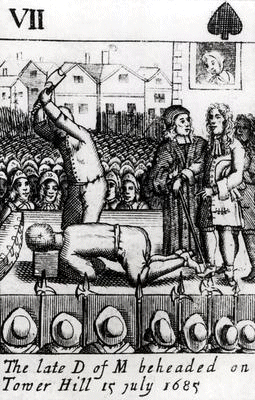
 An immigrant of Irish extraction, he became famous through the way he performed his duties during the tumults of the 1680s, when he was often mentioned in broadsheet accounts that circulated throughout the Kingdom of England. He is thought to have been appointed in 1663. He executed the death sentences against William Russell, Lord Russell in Lincoln's Inn Fields on July 21, 1683
An immigrant of Irish extraction, he became famous through the way he performed his duties during the tumults of the 1680s, when he was often mentioned in broadsheet accounts that circulated throughout the Kingdom of England. He is thought to have been appointed in 1663. He executed the death sentences against William Russell, Lord Russell in Lincoln's Inn Fields on July 21, 1683 , and James Scott, 1st Duke of Monmouth on July 15, 1685, after the Monmouth Rebellion. Ketch's notoriety stems from "his barbarity at the execution of Lord Russell, the Duke of Monmouth, and other political offenders."Ketch's execution of Lord Russell at Lincoln's Inn Fields
, and James Scott, 1st Duke of Monmouth on July 15, 1685, after the Monmouth Rebellion. Ketch's notoriety stems from "his barbarity at the execution of Lord Russell, the Duke of Monmouth, and other political offenders."Ketch's execution of Lord Russell at Lincoln's Inn Fields
 Recusants and Wholesome Physick for a Popish Contagion. In 1679, there appears from another pamphlet purporting to be written by Ketch himself, and entitled The Man of Destiny's Hard Fortune, that the hangman was confined for a time in the Marshalsea prison, "whereby his hopeful harvest was like to have been blasted." A short entry in the autobiography of Anthony à Wood for August 31, 1681 describes how Stephen College was hanged in the Castle Yard, Oxford, "and when he had hanged about half an hour, was cut down by Catch or Ketch, and quartered under the gallows, his entrails were burnt in a fire made by the gallows.In 1686 Ketch was sent to prison for "affronting" a sherrif.
Recusants and Wholesome Physick for a Popish Contagion. In 1679, there appears from another pamphlet purporting to be written by Ketch himself, and entitled The Man of Destiny's Hard Fortune, that the hangman was confined for a time in the Marshalsea prison, "whereby his hopeful harvest was like to have been blasted." A short entry in the autobiography of Anthony à Wood for August 31, 1681 describes how Stephen College was hanged in the Castle Yard, Oxford, "and when he had hanged about half an hour, was cut down by Catch or Ketch, and quartered under the gallows, his entrails were burnt in a fire made by the gallows.In 1686 Ketch was sent to prison for "affronting" a sherrif.

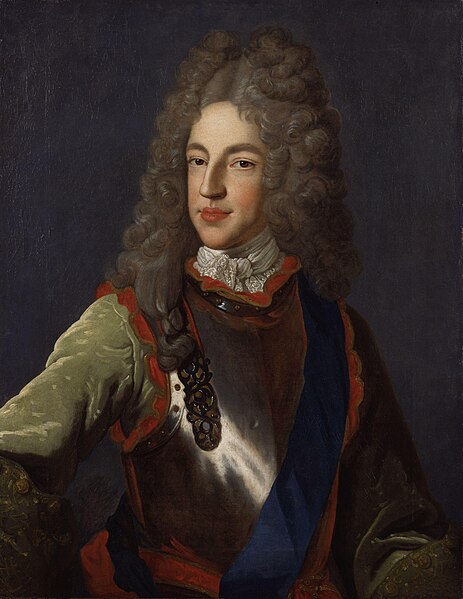




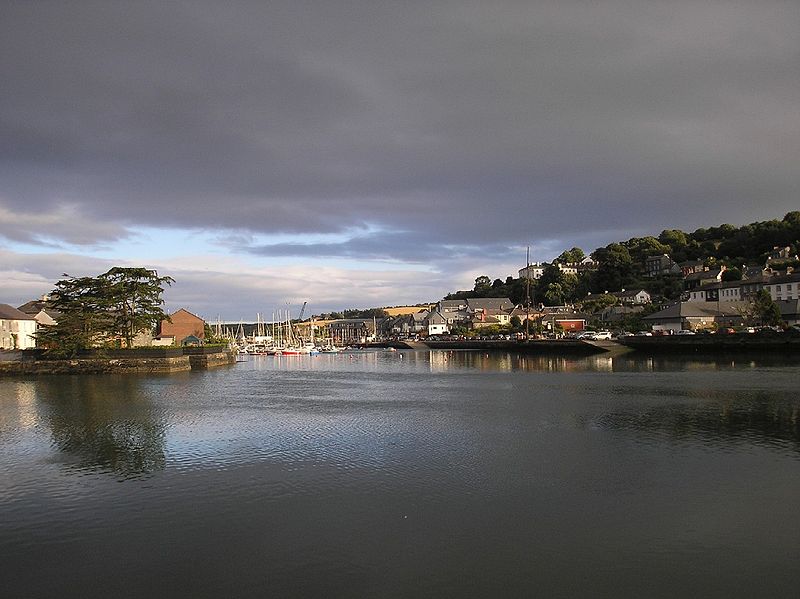

 Earl of Melfort
Earl of Melfort

